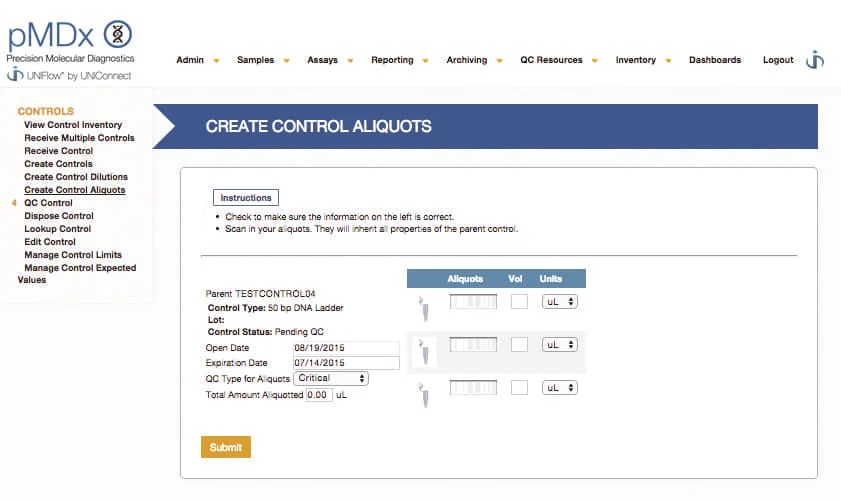Laboratory information system integration for pathology labs with result reporting automation: 5 Revolutionary Benefits of Laboratory Information System Integration for Pathology Labs with Result Reporting Automation
In today’s fast-paced healthcare environment, pathology labs face mounting pressure to deliver faster, more accurate results. Enter laboratory information system integration for pathology labs with result reporting automation—a game-changing solution transforming diagnostic precision and operational efficiency.
1. Understanding Laboratory Information System Integration for Pathology Labs with Result Reporting Automation

At its core, laboratory information system integration for pathology labs with result reporting automation refers to the seamless connection of a Laboratory Information System (LIS) with various diagnostic, administrative, and reporting tools used in pathology workflows. This integration enables data to flow automatically between systems—such as electronic health records (EHRs), imaging systems, and analytical instruments—minimizing manual data entry and reducing the risk of errors.
What Is a Laboratory Information System (LIS)?
A Laboratory Information System (LIS) is a specialized software platform designed to manage the workflow, data, and operations of clinical laboratories. In pathology labs, the LIS tracks specimen collection, processing, analysis, and reporting. It acts as the central nervous system, coordinating every phase of the diagnostic lifecycle.
- Tracks patient demographics and specimen details
- Manages test orders and results
- Supports quality control and regulatory compliance
Modern LIS platforms are increasingly cloud-based, offering scalability and remote access, which is especially beneficial for multi-site pathology networks.
Key Components of LIS Integration
Effective laboratory information system integration for pathology labs with result reporting automation involves several interconnected components:
Instrument Interfaces: Direct connections to analyzers and microscopes that automatically upload test results into the LIS.EHR/HIS Integration: Bi-directional data exchange with hospital information systems (HIS) or electronic health records (EHRs), ensuring clinicians receive timely reports.Middleware Solutions: Software layers that normalize data from different instruments and systems, enabling smooth communication.Automated Reporting Engines: Tools that generate structured pathology reports using predefined templates and AI-assisted interpretation.”Integration isn’t just about connecting systems—it’s about creating a unified ecosystem where data flows intelligently and securely.” — Dr.Elena Rodriguez, Healthcare IT ConsultantThe Role of Automation in Pathology ReportingAutomation in result reporting eliminates the need for manual transcription, a historically error-prone and time-consuming process..
With laboratory information system integration for pathology labs with result reporting automation, results are generated, validated, and delivered to clinicians in near real-time.This includes everything from routine histopathology reports to complex molecular diagnostics..
- Reduces turnaround time (TAT) by up to 40%
- Enables auto-verification of normal results based on predefined rules
- Supports digital signatures and audit trails for compliance
For example, when a pathologist finalizes a diagnosis in the LIS, the system can automatically format the report, attach relevant images, and push it directly to the referring physician’s EHR—without human intervention.
2. The Critical Need for LIS Integration in Modern Pathology Labs
Pathology labs are under increasing pressure to handle higher volumes of tests while maintaining accuracy and speed. The traditional model of isolated systems and manual reporting is no longer sustainable. Laboratory information system integration for pathology labs with result reporting automation addresses these challenges by creating a cohesive, data-driven environment.
laboratory information system integration for pathology labs with result reporting automation – Laboratory information system integration for pathology labs with result reporting automation menjadi aspek penting yang dibahas di sini.
Growing Test Volumes and Data Complexity
With the rise of precision medicine and genomic testing, pathology labs are processing more complex data than ever before. A single biopsy may generate gigabytes of digital slide data, molecular profiles, and clinical annotations. Without integration, managing this data across disparate systems leads to bottlenecks and inconsistencies.
- Genomic and immunohistochemistry (IHC) tests require integration with bioinformatics tools
- Digital pathology platforms generate large image files that must be stored and retrieved efficiently
- Integrated LIS ensures all data elements are linked to the correct patient and specimen
According to a CDC report on LIS standards, labs that fail to integrate risk data silos that compromise patient safety and regulatory compliance.
Regulatory and Compliance Demands
Pathology labs must comply with stringent regulations such as CLIA (Clinical Laboratory Improvement Amendments), HIPAA (Health Insurance Portability and Accountability Act), and CAP (College of American Pathologists) accreditation. Laboratory information system integration for pathology labs with result reporting automation helps meet these requirements by ensuring data integrity, auditability, and secure access.
- Automated audit trails track every user action within the LIS
- Role-based access controls prevent unauthorized data access
- Integrated systems support CAP checklist requirements for result verification and reporting
For instance, CAP requires that all final reports be reviewed and signed by a qualified pathologist. An integrated LIS can enforce this workflow, preventing premature release of results.
Interoperability Challenges in Healthcare
One of the biggest hurdles in healthcare is the lack of interoperability between systems. A pathology lab may use one LIS, while the hospital uses a different EHR, and the referring clinic relies on yet another platform. Without laboratory information system integration for pathology labs with result reporting automation, critical results may be delayed or lost in translation.
- HL7 and FHIR standards enable structured data exchange between systems
- Integration engines like Mirth Connect or Rhapsody facilitate message routing
- Standardized coding (e.g., LOINC, SNOMED CT) ensures consistent test identification
A HealthIT.gov overview on interoperability emphasizes that integrated systems reduce medical errors and improve care coordination.
3. Core Benefits of Laboratory Information System Integration for Pathology Labs with Result Reporting Automation
The advantages of implementing laboratory information system integration for pathology labs with result reporting automation are both operational and clinical. From reducing errors to enhancing patient outcomes, the impact is profound and measurable.
Improved Turnaround Time (TAT)
One of the most immediate benefits is faster result delivery. Automated workflows eliminate manual steps such as data entry, report formatting, and result transmission. Studies show that integrated labs can reduce TAT by 30–50%, which is critical in time-sensitive diagnoses like cancer or sepsis.
- Specimen tracking from collection to reporting is real-time
- Auto-routing of abnormal results to pathologists for review
- Instant notifications to clinicians when results are available
For example, a large academic medical center reported a 45% reduction in TAT after integrating their LIS with digital pathology and EHR systems.
laboratory information system integration for pathology labs with result reporting automation – Laboratory information system integration for pathology labs with result reporting automation menjadi aspek penting yang dibahas di sini.
Enhanced Accuracy and Reduced Errors
Manual data entry is a leading cause of laboratory errors. By automating data flow, laboratory information system integration for pathology labs with result reporting automation significantly reduces the risk of misidentification, transcription errors, and result mismatches.
- Barcoding and RFID technologies ensure specimen-patient linkage
- Automated validation rules flag out-of-range values
- Integrated systems prevent duplicate testing
“A single mislabeled specimen can lead to a wrong diagnosis. Automation is our first line of defense.” — Dr. James Lin, Chief Pathologist
A study published in the NCBI found that labs with full LIS integration experienced a 60% reduction in pre-analytical errors.
Increased Operational Efficiency
Integration streamlines workflows, allowing staff to focus on high-value tasks rather than administrative duties. Automated result reporting frees up technologists and pathologists to handle more complex cases.
- Reduced need for manual report printing and faxing
- Centralized dashboard for monitoring lab performance
- Automated billing and coding integration with practice management systems
Labs also benefit from better resource utilization. For instance, integrated inventory management can alert staff when reagents are running low, preventing test delays.
4. Key Technologies Enabling LIS Integration and Automation
Several technologies form the backbone of successful laboratory information system integration for pathology labs with result reporting automation. Understanding these tools is essential for labs planning to modernize their operations.
HL7 and FHIR Standards for Data Exchange
Health Level Seven (HL7) and Fast Healthcare Interoperability Resources (FHIR) are messaging standards that enable different healthcare systems to communicate. HL7 v2 is widely used for lab result transmission, while FHIR offers a modern, API-based approach for real-time data sharing.
- HL7 messages contain patient, order, and result data in a structured format
- FHIR supports mobile access and integration with patient portals
- Both standards are supported by most major LIS and EHR vendors
For example, when a physician orders a biopsy via EHR, an HL7 ORM (Order Message) is sent to the LIS, which then triggers specimen collection and tracking.
Digital Pathology and Whole Slide Imaging (WSI)
Digital pathology involves scanning glass slides into high-resolution digital images that can be viewed, shared, and analyzed on computers. When integrated with an LIS, WSI enables remote diagnosis, second opinions, and AI-assisted analysis.
- WSI files are stored in image management systems (IMS) linked to the LIS
- Pathologists can annotate slides and attach findings directly to the report
- Integration supports telepathology and multi-disciplinary tumor boards
A study in the Archives of Pathology & Laboratory Medicine found that digital pathology integration improved diagnostic consistency and collaboration.
laboratory information system integration for pathology labs with result reporting automation – Laboratory information system integration for pathology labs with result reporting automation menjadi aspek penting yang dibahas di sini.
Artificial Intelligence and Machine Learning in Reporting
AI is revolutionizing pathology by assisting in image analysis, pattern recognition, and report generation. When combined with laboratory information system integration for pathology labs with result reporting automation, AI can prioritize urgent cases, suggest diagnoses, and auto-populate reports.
- AI algorithms detect cancerous regions in tissue samples
- Natural language processing (NLP) extracts key findings from pathologist notes
- Predictive analytics flag high-risk patients for early intervention
For instance, AI-powered tools like Paige.AI and Proscia are already being used in integrated labs to improve diagnostic accuracy and speed.
5. Implementation Challenges and How to Overcome Them
While the benefits are clear, implementing laboratory information system integration for pathology labs with result reporting automation is not without challenges. Labs must navigate technical, financial, and cultural barriers to ensure success.
High Initial Costs and ROI Considerations
The upfront investment in integration—software, hardware, interfaces, and training—can be substantial. However, the long-term return on investment (ROI) often justifies the cost through improved efficiency and reduced errors.
- Costs include LIS upgrades, middleware, interface engines, and consulting
- ROI is realized through faster TAT, lower labor costs, and fewer repeat tests
- Cloud-based LIS solutions offer lower entry costs and scalable pricing
A cost-benefit analysis by the College of American Pathologists showed that integrated labs recouped their investment within 18–24 months.
Data Security and Privacy Concerns
Integrating systems increases the attack surface for cyber threats. Labs must ensure that all data exchanges are encrypted and compliant with HIPAA and other privacy regulations.
- Use secure protocols like HTTPS and SFTP for data transmission
- Implement multi-factor authentication (MFA) for system access
- Conduct regular security audits and penetration testing
Encryption of data at rest and in transit is non-negotiable. Additionally, integration partners must sign Business Associate Agreements (BAAs) to ensure compliance.
Staff Resistance and Change Management
Employees may resist new systems due to fear of job loss or unfamiliarity with technology. Effective change management is crucial to gain buy-in and ensure smooth adoption.
- Involve staff early in the planning process
- Provide comprehensive training and ongoing support
- Highlight how automation reduces repetitive tasks, not jobs
One lab reported a 70% increase in user satisfaction after implementing a phased training program and appointing internal champions.
laboratory information system integration for pathology labs with result reporting automation – Laboratory information system integration for pathology labs with result reporting automation menjadi aspek penting yang dibahas di sini.
6. Real-World Case Studies of Successful Integration
Several pathology labs have successfully implemented laboratory information system integration for pathology labs with result reporting automation, demonstrating tangible improvements in performance and patient care.
Case Study 1: Academic Medical Center in Boston
This large academic hospital integrated its LIS with digital pathology, EHR, and genomic analysis platforms. The goal was to streamline cancer diagnostics and support precision medicine initiatives.
- Reduced TAT for cancer reports from 7 days to 3 days
- Enabled real-time collaboration between pathologists and oncologists
- Integrated AI tools for tumor grading and biomarker detection
The integration also supported research by allowing anonymized data extraction for clinical trials.
Case Study 2: Regional Pathology Network in Texas
A network of five community labs implemented a cloud-based LIS with automated reporting and EHR integration. The labs previously used standalone systems with manual reporting.
- Eliminated faxing and printing of 8,000 reports per month
- Reduced specimen misidentification by 90%
- Improved billing accuracy through automated CPT code assignment
The cloud model allowed rapid deployment and centralized management, reducing IT overhead.
Case Study 3: Private Diagnostic Lab in London
This lab specialized in molecular pathology and faced challenges with data silos between sequencing machines and reporting systems. They implemented an integrated LIS with FHIR-based EHR connectivity.
- Automated report generation for genetic tests using NLP
- Enabled direct patient access to reports via a secure portal
- Integrated with national cancer registries for automated data submission
The lab saw a 50% increase in throughput without adding staff.
7. Future Trends in LIS Integration and Automated Reporting
The evolution of laboratory information system integration for pathology labs with result reporting automation is far from complete. Emerging technologies and shifting healthcare models will continue to shape the future of pathology.
AI-Driven Predictive Reporting
Future LIS platforms will not just report results but predict outcomes. By analyzing historical data, AI can suggest likely diagnoses, recommend additional tests, or flag patients at risk of disease progression.
laboratory information system integration for pathology labs with result reporting automation – Laboratory information system integration for pathology labs with result reporting automation menjadi aspek penting yang dibahas di sini.
- Predictive models for cancer recurrence based on pathology and clinical data
- Automated alerts for patients needing follow-up biopsies
- Integration with wearable devices for real-time monitoring
This shift from reactive to proactive reporting will redefine the role of pathology in preventive care.
Blockchain for Data Integrity
Blockchain technology offers a tamper-proof ledger for tracking specimen handling, test results, and report approvals. In integrated LIS environments, blockchain can enhance trust and transparency.
- Immutable audit trails for every data change
- Secure sharing of results with patients and providers
- Support for regulatory audits with verifiable logs
Pilot projects in Europe are already exploring blockchain for pathology data management.
Expansion of Patient-Centric Reporting
Patients are demanding greater access to their health data. Integrated LIS systems will increasingly support patient portals, mobile apps, and plain-language reports.
- Automated translation of technical findings into patient-friendly summaries
- Secure messaging between patients and pathologists
- Integration with telehealth platforms for virtual consultations
This trend aligns with global movements toward patient empowerment and shared decision-making.
What is laboratory information system integration for pathology labs with result reporting automation?
Laboratory information system integration for pathology labs with result reporting automation is the process of connecting a lab’s LIS with other clinical and administrative systems to enable seamless data flow and automated generation, validation, and delivery of pathology reports.
How does LIS integration improve patient safety?
By reducing manual data entry, ensuring accurate specimen tracking, and enabling faster result delivery, LIS integration minimizes errors and supports timely clinical decisions, directly enhancing patient safety.
laboratory information system integration for pathology labs with result reporting automation – Laboratory information system integration for pathology labs with result reporting automation menjadi aspek penting yang dibahas di sini.
Can small labs afford LIS integration?
Yes. Cloud-based LIS solutions and modular integration tools have made it more affordable for small and mid-sized labs to adopt automation. Many vendors offer pay-as-you-go models with low upfront costs.
Is AI replacing pathologists in automated reporting?
No. AI is a supportive tool that enhances pathologists’ accuracy and efficiency. It handles routine tasks and pattern recognition, but final diagnosis and complex interpretation remain the responsibility of trained professionals.
What standards are used for LIS integration?
Common standards include HL7 v2, FHIR, LOINC, and SNOMED CT. These ensure consistent data formatting and interoperability between different healthcare systems.
The integration of laboratory information systems in pathology labs, especially when combined with automated result reporting, is no longer a luxury—it’s a necessity. From reducing errors and turnaround times to enabling advanced diagnostics and compliance, the benefits are transformative. While challenges exist, strategic planning, staff engagement, and the right technology partners can ensure successful implementation. As AI, blockchain, and patient-centric models evolve, the future of pathology lies in intelligent, integrated, and automated systems that deliver faster, safer, and more personalized care.
laboratory information system integration for pathology labs with result reporting automation – Laboratory information system integration for pathology labs with result reporting automation menjadi aspek penting yang dibahas di sini.
Recommended for you 👇
Further Reading:




